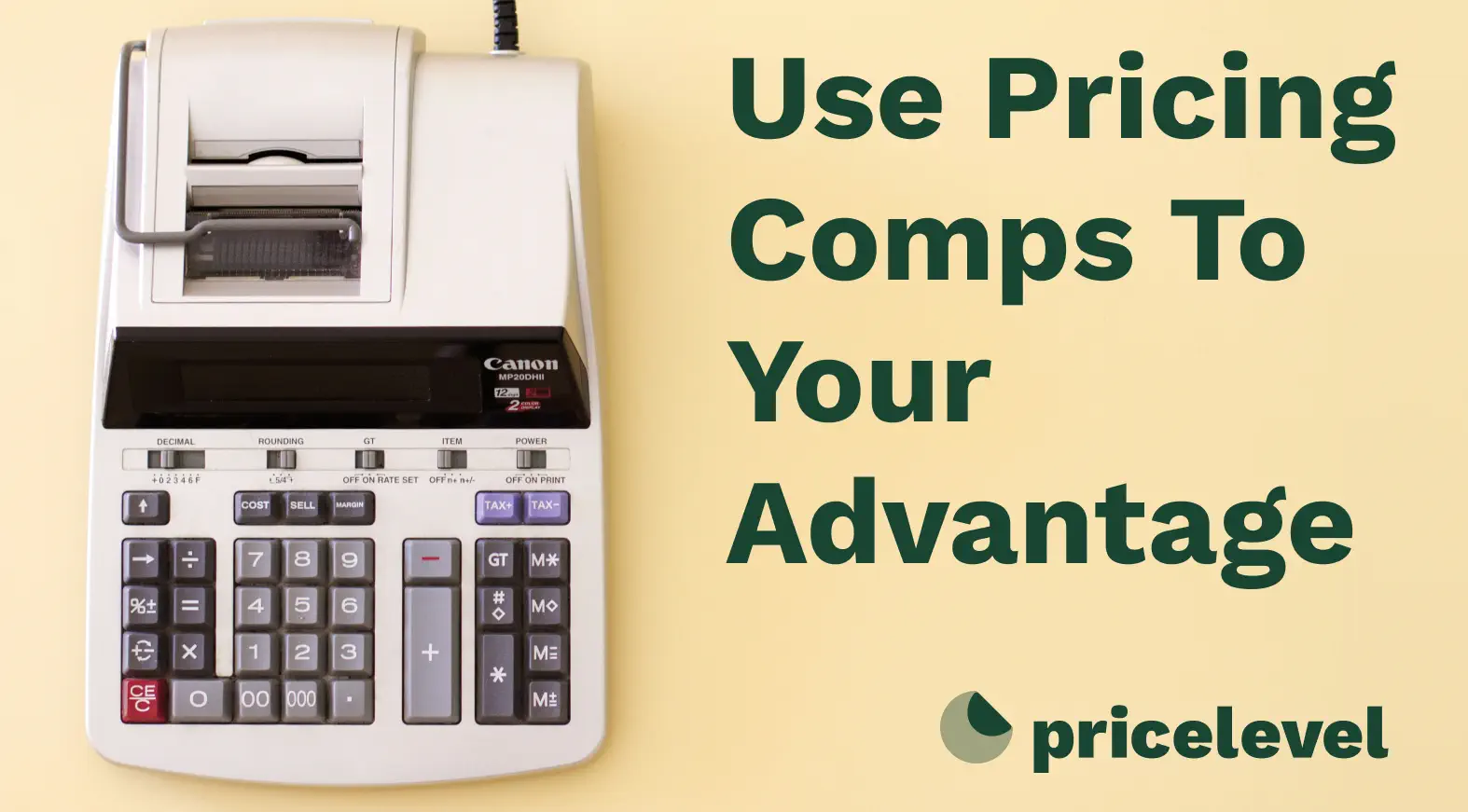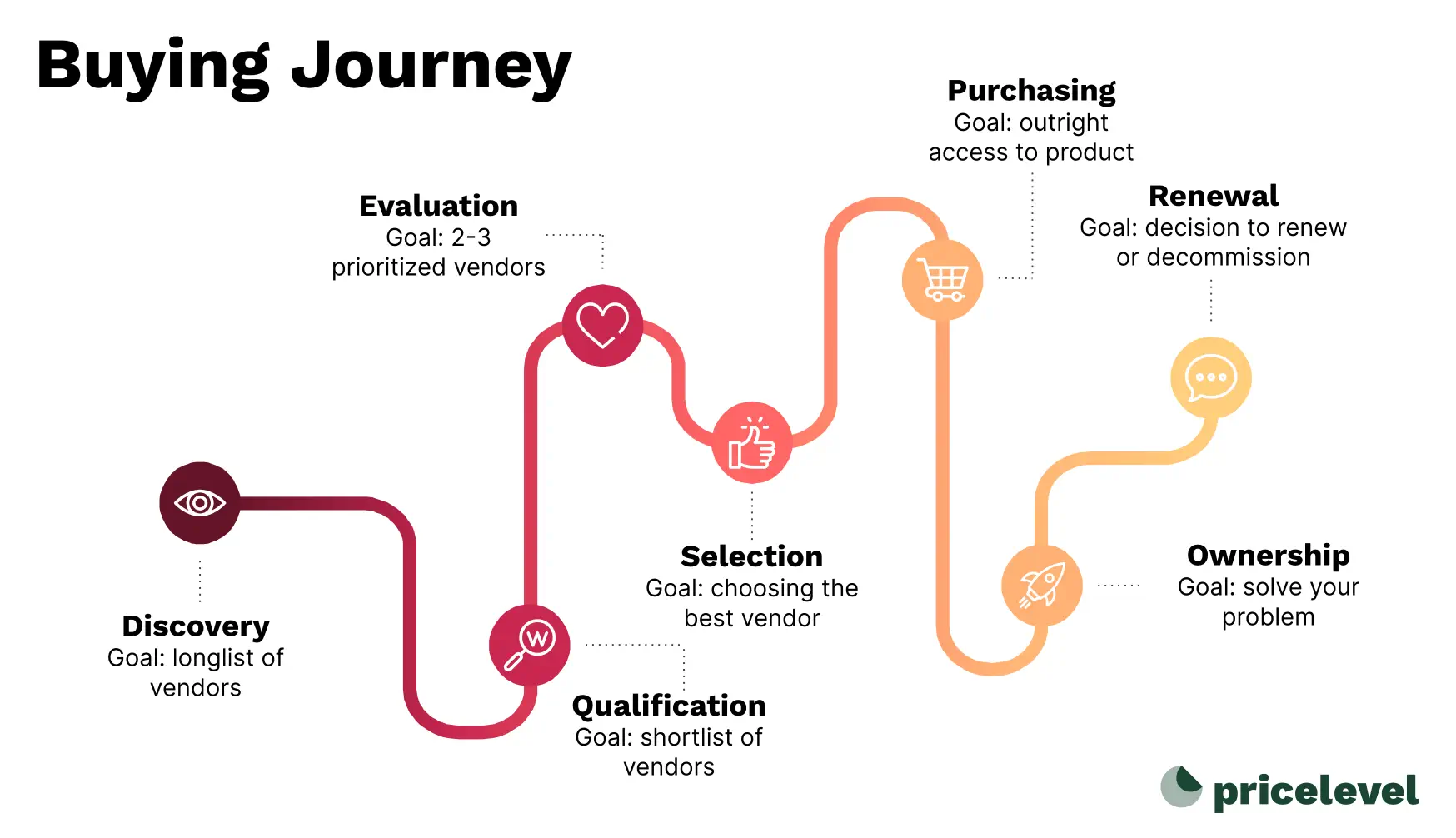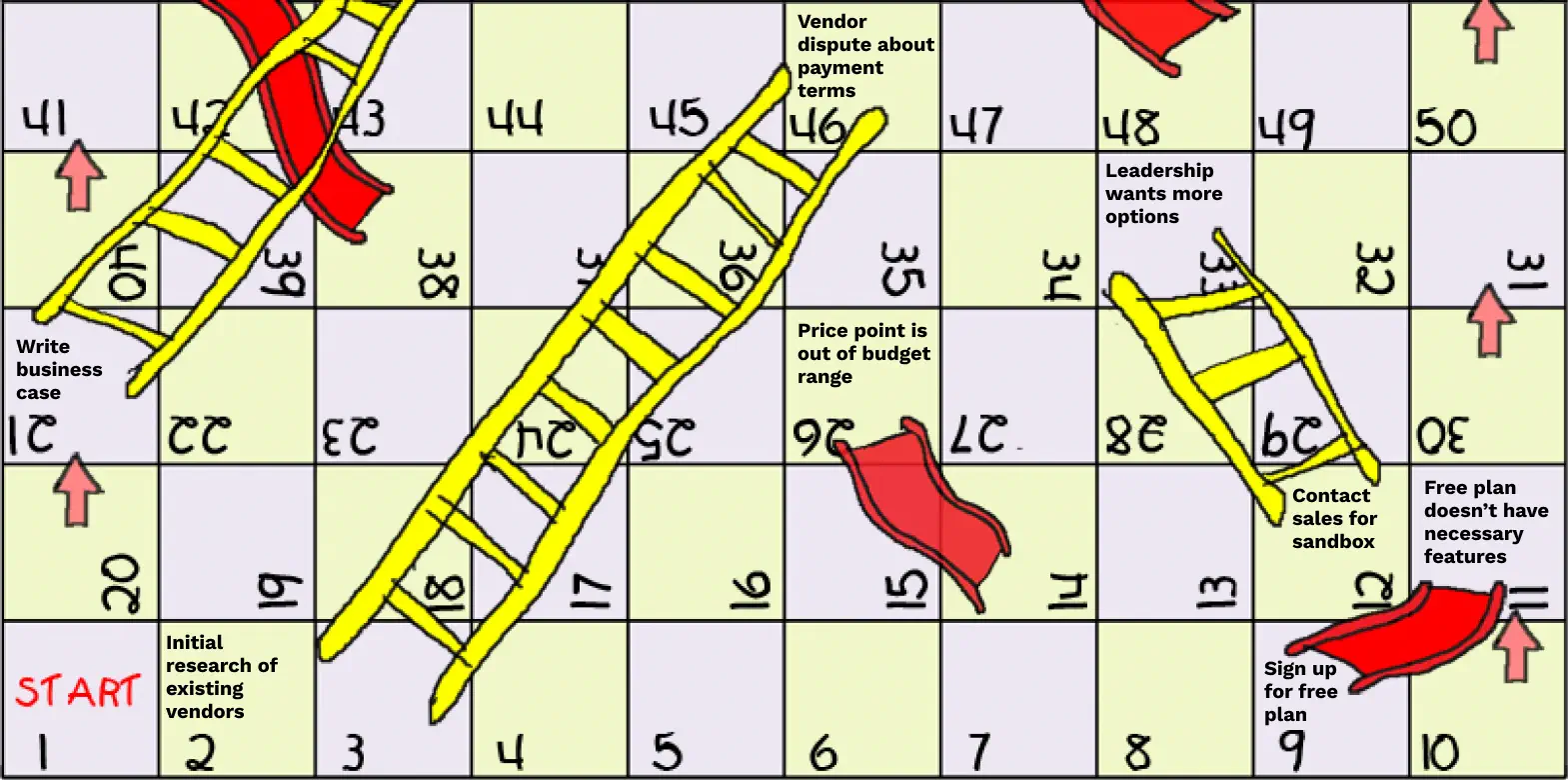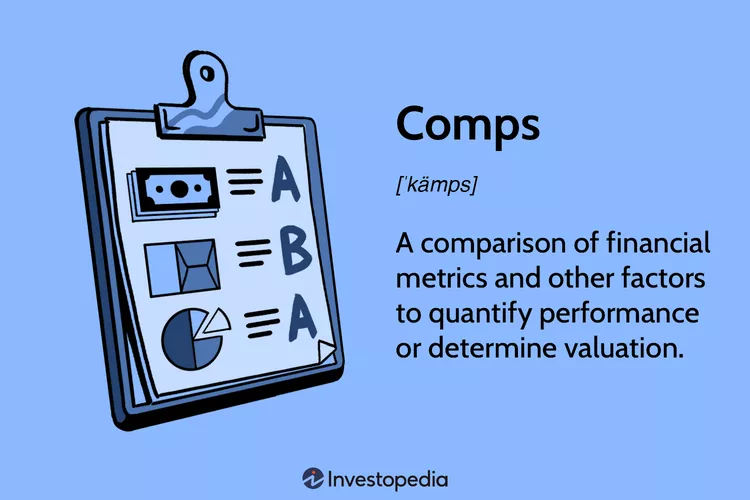5 Key Moments When Pricing Comps Matter Most


Chances are, if you’ve spoken to anybody who has purchased enterprise software, they did not enjoy the experience. That’s most likely an understatement for their true feelings. When we interviewed customers before starting PriceLevel, we heard quotes like:
“Everybody that I know that has to do this dreads it”
“It’s universally hated, we all have to do it, and it stinks”
“What can you build that makes this easier so that people don’t want to quit their jobs just so they don’t have to do this?”
As somebody who was regularly responsible for buying software for my product teams, I was vigorously nodding my head when I heard these quotes. One of the biggest contributors to this dreadful process is the lack of pricing transparency. Whether it’s during the initial research phase or all the way at the end during contract negotiations, the lack of transparent pricing makes it difficult to complete any phase well.

The buying journey
The buying journey is long, and varies depending on company size, procurement maturity, organizational structure, etc. At PriceLevel, we mapped the buying journey to these high level phases:
- Discovery - assuming a need has been identified and agreed upon, discovery is the initial research to see what vendors exist that could solve your problem. The outcome of discovery is a longlist of vendors.
- Qualification - detailed research into what each vendor offers and how they compare to your requirements (e.g., data compliance, integrations, API, etc.) The deliverable from qualification is a shortlist of qualified vendors.
- Evaluation - deep dive to test out the product (e.g., proof of concept, free plan, trial) and assess how it solves your specific problem. The outcome of evaluation is a prioritized list of 2 - 3 vendors.
- Selection - collaborative exercise with stakeholders to identify the best choice that solves your problem and satisfies your stakeholder’s primary concerns.The outcome of selection is to choose the best vendor for your use case. This marks a major milestone in the buying process!
- Purchasing - process through which you negotiate and buy the product, either directly from the vendor or through a third-party. The deliverable of purchasing is outright access to the product at the best deal possible.
- Ownership - this can be long or short term, but ownership encompasses everything from implementation, support, upgrades/downgrades, and beyond. The goal of owning the product is to use it to solve your business problem.
- Renewal - decision point to decide whether to renew with the vendor and continue ownership or decommission. If satisfied with the vendor, then the renewal phase is similar to purchasing. The outcome of renewal is to continue having access to the purchased product.
- Decommissioning - if dissatisfied with the vendor, then you cancel your subscription or agreement and start removing the product from your company. The outcome of decommissioning is to terminate the business obligations and remove all dependencies on the product.
For companies with the technical capability and capacity to build, you might also evaluate buying vs building solutions. Unfortunately, the buying journey isn’t always linear. You could be building a proof of concept only to go back to the drawing board when the cost is out of your range. Or worse, you could be almost done with contract negotiations only to have it fall apart because both sides can’t agree on the payment terms. While we can’t foresee every possible obstacle, we know that opaque pricing is an unnecessary one.

When having pricing comps matters the most
At PriceLevel, we’re building pricing transparency for SaaS through verified software prices from actual buyers. This means you get to see what other companies actually pay for the same SaaS tools you’re considering. And not just the overall price. We believe a good pricing comp includes the products and their individual prices, contract length, and a sense of the scale (number of users, usage volume, etc). A high quality pricing comp has all the info to answer the question: “is this price point relevant to me?”
Knowing what others pay for software matters the most in 5 distinct moments:
- Discovery - at this point, you just want to know a range to understand if it’s worth your time. When there’s no public pricing at all, it’s hard to understand if this will cost you $10,000, $100,000, or $1,000,000. If it’s way above your budget, you can disqualify this vendor immediately before hopping on sales demos.
- Evaluation - when you’re evaluating a vendor, you want to understand how much this product will cost you now and in the future, and how that compares to competitors. Pricing can depend on users or usage so it’s important to know if and how this vendor can scale with you before committing to implement.
- Selection - the selection process includes a variety of stakeholders who have their own goals. Pricing comps show finance, legal, IT, and others that you’ve done your due diligence on pricing and contract terms, and have a compelling case for selecting this specific vendor.
- Purchasing - once you’re committed to buying a product, you want to be able to get the best price possible while maintaining a good relationship. But knowing the best price is almost impossible without knowing what others are paying. Pricing comps establish what’s achievable.
- Renewal - switching vendors isn’t free, both from a time and monetary standpoint. If renewing, pricing comps can help you lower costs and avoid the renewal uplift. If you’re shopping around, those same comps can qualify and disqualify options before you cancel your existing subscription.
Knowledge is power, and by knowing what others actually pay for the same software, you can level the playing field. It doesn’t matter if you’re just starting out in your buying journey or are committing to a multi-year contract, pricing transparency is a tide that lifts all boats for buyers.

We’re just getting started
We started with pricing comps because it’s relevant for all phases of the buying journey, but we believe each phase deserves more specialized features that help you achieve your goals. As we continue to gather more pricing comps, we’ll also build out these features:
- Discovery - vendor comparison tools. Select two or more vendors within a category to get a side by side view of their pricing model.
- Qualification, Evaluation, and Selection - cost modeling calculators. Input your needs and we’ll help you calculate what the vendor will cost you now and in the future.
- Purchasing and Renewal - negotiation playbooks. Practical advice and templates tailored for that specific vendor to help you get the best price.
Which feature should we prioritize? Drop us a note at founders@pricelevel.com to let us know.
If you’re in the middle of a buying process right now and need to know if you’re getting a good deal, we can provide pricing comps immediately. Click through below to get started and we’ll get started right away.
